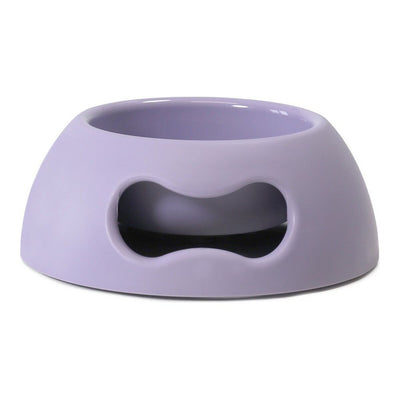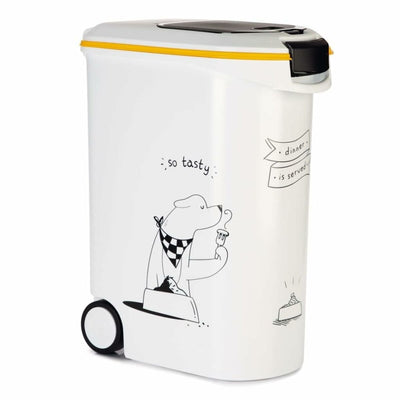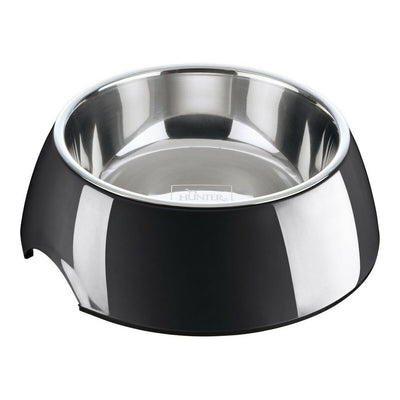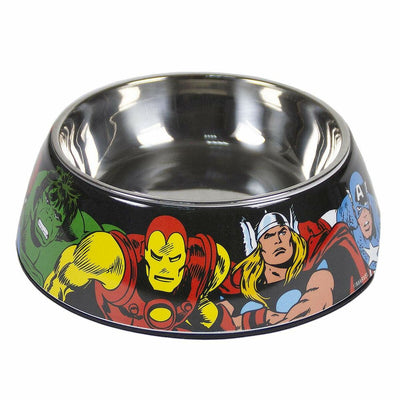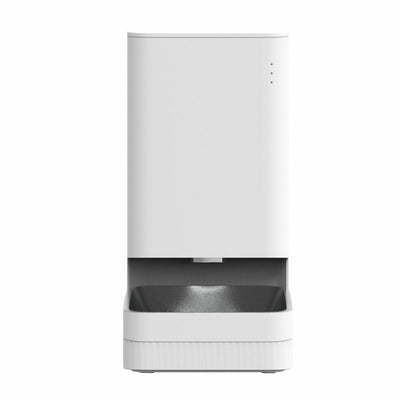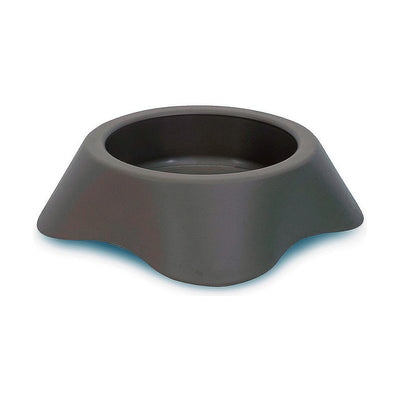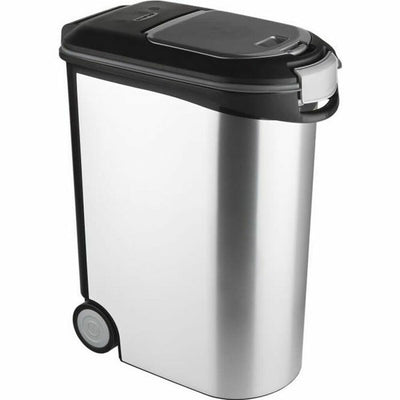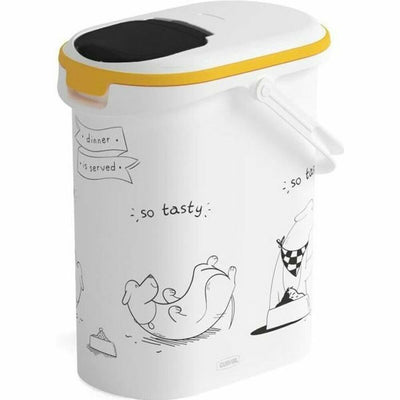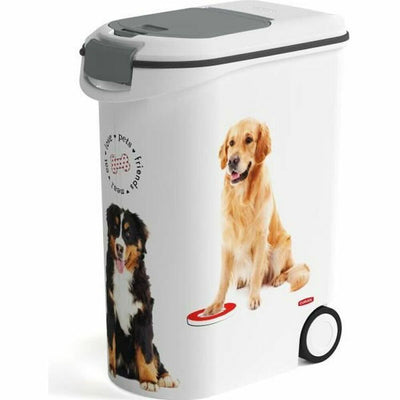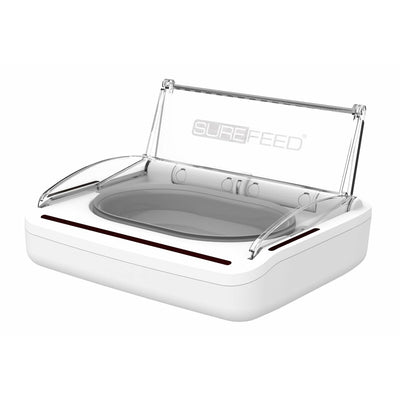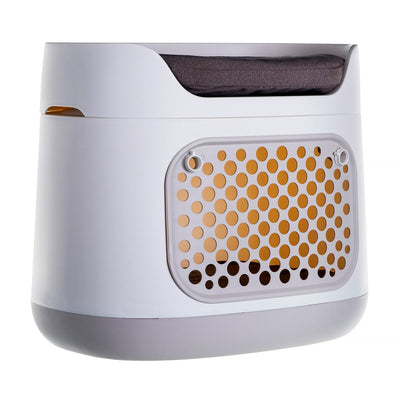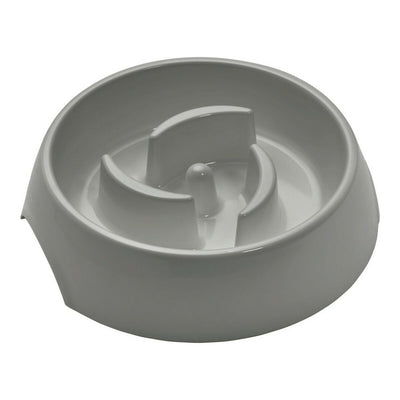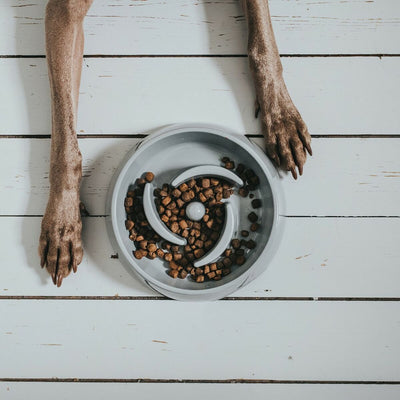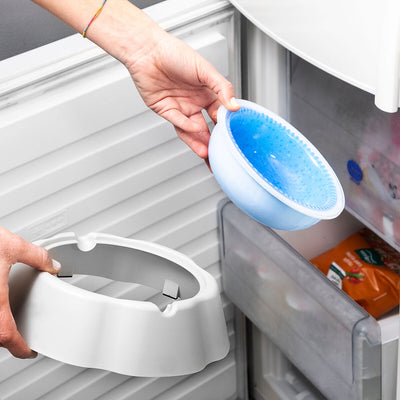
Food and water bowls for dogs
Choosing the perfect dog bowl for food and water
Choosing the right dog bowl is crucial to your furry friend's well-being. From materials to shapes and sizes, every aspect plays a role in your dog's well-being and health. Let’s delve deeper into the considerations of choosing the perfect dog bowl at All4Pets and explore the different options available on the market.
How to choose the right bowl for your dog
Ensuring your dog has the right bowl is about more than just choosing a size. Let’s break down the key factors to consider.
1. Size matters
Dogs come in different sizes, and this also applies to their bowls. Small breeds may struggle with deep bowls, while larger dogs may find small bowls frustrating. Choose a bowl size that suits your dog's breed and eating habits.
2. Material selection
The material of the bowl not only affects its durability, but also plays a role in your dog's health. Each type of material has its own advantages and disadvantages.
Stainless steel:
- Advantages: Durable, rust resistant and easy to clean.
- Cons: Can be noisy, especially for dogs who like to push their bowls around.
Ceramic:
- Advantages: Stylish, heavy and more resistant to tipping.
- Cons: Prone to chipping or cracking, requires regular inspection.
Plastic:
- Pros: Lightweight and affordable.
- Cons: Prone to scratches, can harbor bacteria, and may not hold up to chewing.
3. Height and accessibility
The height and accessibility of your dog's bowl play a crucial role in your dog's overall well-being during mealtimes. Consider these key factors to ensure a dining experience that meets your dog's individual needs.
Raised bowls:
Raised bowls are used to bring your dog's food and water to a more comfortable height. This can be particularly beneficial for larger breeds or dogs with arthritis or joint problems. The elevated position reduces strain on the neck and joints and promotes better posture while eating.
Bowls close to the ground:
Low-level bowls that are placed directly on the floor are suitable for most dogs and may be preferred by certain breeds. This arrangement allows for a more natural and relaxed feeding posture, which is particularly important for puppies or smaller breeds.
Height-adjustable bowls:
For more versatility, consider bowls with adjustable height settings. These bowls are suitable for dogs of different sizes, ensuring an optimal eating experience throughout your dog's life cycle.
Last but not least, consider the location of your dog's bowl. Place the bowl in a quiet and easily accessible location, away from heavy traffic or loud distractions. This provides your dog with a comfortable environment in which he can enjoy his meals without stress.
4. Anti-slip features
Dogs can be avid eaters and can cause bowls to slide across the floor. Look for bowls with non-slip bottoms to avoid mess and frustration.
Proper cleaning techniques for food and water bowls
Maintaining a clean environment for your dog's food and water bowls is paramount to your dog's health and well-being. Here's a detailed guide to effective cleaning techniques to ensure your furry friend's dining area stays spotless.
- Daily conditioner:
After each meal, rinse the bowls thoroughly with warm water to remove any food particles. This simple step prevents bacteria from forming and keeps the bowls fresh for your dog's next meal.
- Regular scrubbing:
Wash the bowls at least a few times a week with a mild, dog-friendly soap and a soft brush. Pay attention to corners and crevices where residue can collect. This helps remove stubborn food residue and prevent lingering odors.
- Thorough cleaning:
Do a deep clean at least once a week. Soak the bowls in a solution of warm water and a pet-friendly disinfectant. This not only eliminates bacteria, but also eliminates any odors. Rinse thoroughly to ensure no cleaning residue remains.
- Check for wear:
Check bowls regularly for signs of wear. On plastic bowls, look out for scratches that can harbor bacteria. Check ceramic bowls for chips or cracks that could compromise their integrity. Replace damaged bowls immediately.
- Separate bowls for dog food and water:
If possible, use separate bowls for food and water. Not only does this help with portion control, but it also prevents cross-contamination. Water bowls in particular should be cleaned more frequently to prevent algae or mold from forming.
- Consider Dishwasher Safe Bowls:
If your dog's bowls are dishwasher safe, take advantage of this convenient option. Make sure they are placed on the top basket to avoid possible damage. Check regularly for signs of wear and tear on the dishwasher.
- Maintain the feeding area:
In addition to cleaning your dog's bowls, pay attention to the surrounding area. Wipe down the eating area regularly to prevent the accumulation of crumbs and spills, thereby creating a hygienic space for your dog's meals.
Pro Tip : Alternate between multiple sets of bowls if you have them. This ensures that you always have a clean set ready, even when time for a thorough cleaning is running out.
FAQs
How often should I clean my dog's bowl?
Clean your dog's bowl daily and do a thorough cleaning at least once a week.
Are plastic bowls safe for dogs?
While plastic bowls are convenient, they can harbor bacteria and may not be suitable for heavy chewers.
Should I choose an elevated bowl for my dog?
Elevated bowls can be beneficial for older dogs or dogs with joint problems. However, you should consult your veterinarian for individual advice.
Can I use food grade dish soap to clean my dog's bowl?
Yes, but make sure it is mild and rinse thoroughly to avoid residue.


